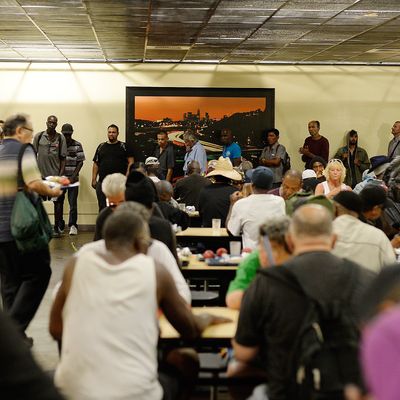
It feels strange to say this, but there’s a welfare-policy idea that is very in vogue. That idea is just giving everybody enough money to live on, rich or poor, old or young, working or not working. It is called a universal basic income.
Silicon Valley is in the midst of a love affair with it, arguing that when robots come to take all of our jobs, we’re going to need stronger redistributive policies to help keep families afloat. European socialists are in the midst of a love affair with it, arguing that it would deliver the freedom of choice in a world where the dignity of work is hard to come by. Development economists are interested in it, encouraged by studies showing how well cash transfers work to improve the livelihoods of the world’s very poor. It also has advocates on the right and the left in Washington, who argue that it would eliminate government bloat and help prevent the worst kind of poverty, respectively.
But the arguments for a universal basic income are just that — arguments. We have a lot of suggestive evidence to tell us about its costs and benefits, including a number of small pilots and a number of studies on cash transfers. But no country or nonprofit has ever implemented one, not a true one — until now. And even though that project might not tell us much about how a basic income would work here in the United States, there are other promising pilots that could. What was once a deranged-sounding fringe policy idea has become an in-vogue welfare-policy idea and is about to become a tried-and-tested welfare policy.
This first real initiative, announced just this month, comes from the charity GiveDirectly, which, well, gives money directly to very, very, very poor families in Kenya and Uganda. It plans on providing a basic income to at least 6,000 Kenyans for a decade or longer, an initiative that will flush millions of dollars to some of the most vulnerable households on Earth. How is this different from the other case studies that we have? Well, the wonks who run the charity figured that to truly test a universal basic income you would need a program that was universal, meaning that everyone in a given community received it. You would need it to be basic, meaning that it would pay for a bare-bones standard of living. And it would need to be long-term rather than a onetime income boost. No such program has ever existed.
GiveDirectly is building its project as a randomized control trial: Some Kenyan villages will get the basic income; others will not. That will allow it to tease out all sorts of empirical data from its project. They’ll be able to see how the recipient villagers’ consumption, investment, and income patterns change. Does their health improve? Do they spend their time differently? Do they have more children? Do they work more or less? It will also help shed light on the best way to deliver aid to such very low-income people: Is it better to give them a big lump sum, as GiveDirectly normally does, or better to parcel the money out over time, as it will with its basic income?
This initiative might not shed too much light on how a basic income would work in the United States or in Europe — to state the very obvious, the circumstances in which people make decisions about consumption, work, and investment here are very different than those in poor regions of Kenya. But there are a number of new test cases that could. The city of Utrecht, in the Netherlands, is testing giving out monthly, no-strings-attached checks to a number of people who were already receiving welfare benefits. It could cut down on government waste and improve welfare, its proponents claim. “We have 10,000 unemployed people in Utrecht, but if they all have to do something in return for welfare, we just don’t have the people to see to that,” Nienke Horst, a Dutch policy adviser, told The Guardian. “It costs too much.”
And Finland is running a pilot to figure out whether a basic income would make sense there, too. (Even the country’s conservatives are in support of the idea.) The government has not settled on the details yet, including the amount given individuals would receive or who would receive them. But it plans on kicking the program off next year, running it for two years, and having a team of respected social scientists examine the results.
Those initiatives might be able to answer some of the big questions a proponent for a basic income in the United States would have to answer. Wouldn’t people stop working? What would happen with inflation? What would happen to businesses that primarily use low-wage workers? Would it really work better than having a patchwork of anti-poverty programs? We don’t really know the answer to those questions yet.
But we do know this. In the United States, we spend hundreds of billions of dollars to prevent poverty, and yet one in seven of us still lives in poverty, including one in five children. Despite being the richest country in the history of the world, roughly 1.5 million households are living on less than $2 a day per person. A basic income is one solution to that problem. And in a few years, we will know a whole lot more about whether it is the right one.





























